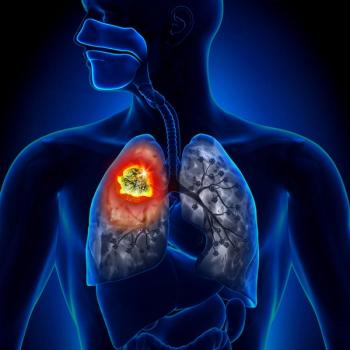
Strategy for Reducing Obesity May Mitigate Advanced Breast Cancer Diagnoses

Screening frequency appears to be a weak risk factor for advanced breast cancer, with obesity in post-menopausal and dense breasts in pre-menopausal patients being more prominent factors.
The proportion of advanced breast cancer diagnoses attributed to biennial screenings compared with annual screenings was limited, with investigators reporting that primary prevention strategies should focus on helping patients classified as overweight and obese “achieve a normal weight” to help reduce diagnoses, according to findings from a cohort study published in JAMA Oncology.
Annual or biennial screening mammograms were carried out 3,331,740 times; most screenings were performed on White patients (72.0%), Asian or Pacific Island patients (10.8%), Black patients (9.5%), Hispanic/Latinx patients (5.3%), and those of other races and ethnicities (2.0%). Investigators reported the highest rates of obesity or overweight status in Black patients (85.2%) followed by Hispanic/Latinx patients (70.4%) and White patients (56.0%). Additionally, the highest risks for developing advanced breast cancer within 24 months following screening mammography were observed in Black patients who were premenopausal (OR, 1.95; 95% CI, 1.41-2.70) and postmenopausal (OR, 2.24; 95% CI, 1.81-2.77) compared with Asian or Pacific Island patients.
Compared with screening annually, biennial screenings correlated with an increased advanced breast cancer risk for both premenopausal (OR, 1.11; 95% CI, 0.94-1.31) and postmenopausal patients (OR, 1.15; 95% CI, 1.03-1.28). Additionally, a family history of breast cancer significantly correlated with a risk of developing advanced breast cancer in premenopausal (OR, 1.60; 95% CI, 1.35-1.89) and postmenopausal patients (OR, 1.29; 95% CI, 1.16-1.43).
The body mass index (BMI) population attributable risk proportion (PARP) was 30% for postmenopausal patients vs 22% in premenopausal patients; additionally, the rate was 38.6% (95% CI, 32.0%-44.8%) for postmenopausal Black patients, 31.8% (95% CI, 25.3%-38.0%) for postmenopausal Hispanic/Latinx patients, and 30.3% (95% CI, 17.7%-42.0%) for premenopausal Black patients.
Breast density PARPs were highest for premenopausal patients (37.0%) compared with postmenopausal patients (24.0%). Moreover, breast density PARPs were most prominent in premenopausal Asian or Pacific Island patients (46.6%; 95% CI, 37.9%-54.4%), White patients (39.8%: 95% CI, 31.7%-47.3%), and patients of other races (40.2%; 95% CI, 32.1%-47.8%).
“In this cohort study among routinely screened women, the proportion of advanced breast cancers attributed to biennial vs annual screening was small,” the study authors wrote.
“Screening mammography randomized clinical trials have shown decreased advanced cancer rates in [patients] aged 50 to 74 years whether [they] are screened annually or biennially. However, mammography is not sufficient to exclude advanced breast cancer diagnoses. Primary prevention is also needed and should focus on interventions to assist patients with overweight/obesity to attain normal weight to reduce their risk of poor-prognosis tumors.”
Investigators of this study prospectively collected data from Breast Cancer Surveillance Consortium imaging facilities between January 2005 and June 2018. The study’s primary objective was assessing the extent to which clinical factors impacted advanced-stage breast cancer diagnosis risks among routinely screened individuals who were premenopausal or postmenopausal.
The study included a total of 904,615 patients between the ages 40 to 74 years old who received a mammogram 11 to 30 months prior to entry. Annual screenings were defined as occurring within 11 to 18 months, while biennial screenings took place from 19 to 30 months. Investigators excluded screenings from those with a history of breast cancer (n = 185,889), mastectomy (n = 8760), and lobular carcinoma in-situ (n = 2061).
PARPs were calculated based on factors including heterogeneously or extremely dense breasts, family history of breast cancer, overweight or obesity status, a history of benign breast biopsy, and screening interval. Moreover, investigators stratified patients based on menopausal status, as well as race and ethnicity.
Using lower BMI cutoffs, investigators noted no differences in ORs for advanced breast cancer among Asian or Pacific Island patients based on a sensitivity analysis, although overweight/obesity status was more prevalent in this population. Additionally, estrogen receptor or progesterone receptor and ERRB2 status and tumor grade appeared to correlate with risk differences across race and ethnicity groups.
Reference
Kerlikowske K, Chen S, Bissell MCS, et al. Population attributable risk of advanced-stage breast cancer by race and ethnicity. JAMA Oncol. Published online December 7, 2023. doi:10.1001/jamaoncol.2023.5242
Newsletter
Stay up to date on recent advances in the multidisciplinary approach to cancer.



















































































